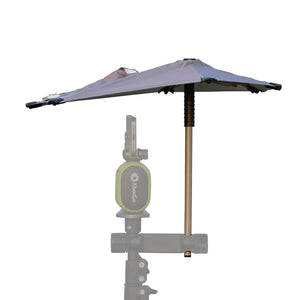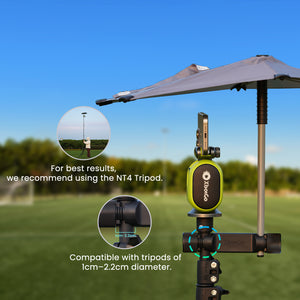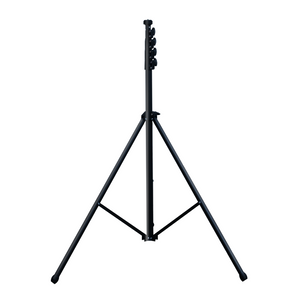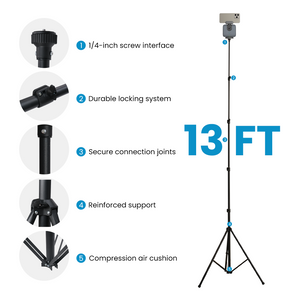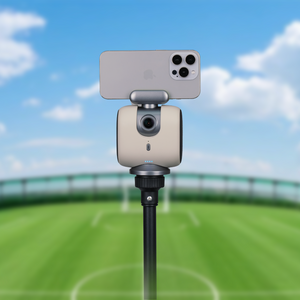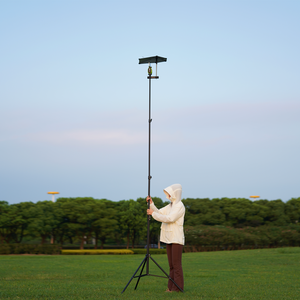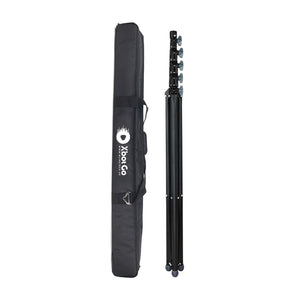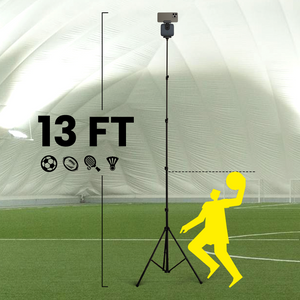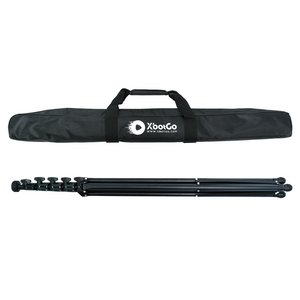XbotGo Chameleon AI Sports Camera
Soccer's Number 9 Position: Skills, Tactics & Pro Secrets
A youth soccer coach frantically searches for a striker among their U10 team, only to find every player desperately wants to play on the wings. This scene plays out on soccer fields worldwide, highlighting a fascinating shift in modern football. The iconic number 9 position—once the most coveted spot on the pitch—now faces an identity crisis that spans from grassroots to professional levels.
What is the Number 9 Position?
The number 9 in soccer represents the team's primary striker or center-forward—the spearhead of the attack positioned closest to the opponent's goal. This player carries the fundamental responsibility of converting chances into goals while serving as the focal point of offensive strategies.
Core responsibilities include:
- Goal scoring: Converting crosses, through balls, and rebounds
- Hold-up play: Receiving long balls and maintaining possession under pressure
- Creating space: Drawing defenders to open channels for teammates
- Pressing: Leading defensive efforts from the front
- Link-up play: Combining with midfielders and wingers
Interestingly, the number 9's interpretation varies across football cultures. In South America, the position emphasizes technical ability and creativity, while European traditions historically favored more physical target men—though this distinction has blurred in modern football.
The Evolution of the Number 9
The story begins in 1928 at Highbury Stadium, where Arsenal faced Sheffield Wednesday in a match that would revolutionize football. Players wore numbered jerseys for the first time, with the center-forward naturally receiving number 9.
From Traditional to Modern
Early formations like the W-M deployed five forwards, creating an era where strikers flourished. As tactics evolved:
- 1950s-60s: The 4-2-4 maintained two central strikers
- 1970s-80s: The 4-4-2 became dominant with strike partnerships
- 1990s-2000s: Single striker systems emerged, demanding complete forwards
- 2010s-Present: The false 9 revolution challenges traditional roles
Pep Guardiola's deployment of Messi as a false 9 fundamentally altered the position. By dropping deep, Messi created chaos in defensive structures, proving the number 9 didn't need to be a traditional target man.
Today's number 9s face unprecedented demands: pressing intelligently, linking play, stretching defenses, and finishing clinically with fewer chances per game.
Essential Skills Every Number 9 Needs
Finishing Mastery
Elite finishing requires technique, composure, and intelligent shot selection:
- Placement over power: Focus on accuracy
- Using all surfaces: Master finishes with both feet and head
- One-touch finishing: Develop instinctive reactions
- Composure under pressure: Maintain technique when closed down
Hold-Up Play
Modern strikers must excel at receiving under pressure:
- Use body positioning as a shield
- Perfect first touch control
- Maintain strength and balance
- Develop spatial awareness
Intelligent Movement
Great strikers possess "poacher's instinct" through:
- Varying runs across, behind, and in front of defenders
- Creating space for teammates
- Timing runs to stay onside
- Attacking blind-side spaces
The "Play the Way You Face" Concept
This practical principle helps strikers make better decisions:
- Facing goal: Attack space and shoot
- Back to goal with pressure: Play simple passes
- Back to goal with space: Turn and drive forward
- Side-on: Choose based on defensive positioning
Mental Strength
Perhaps no position demands greater mental fortitude:
- Develop a short memory for misses
- Maintain unwavering confidence
- Embrace pressure rather than fear it
- Use positive self-talk during difficult periods
Different Types of Modern Number 9s
The Classic Poacher
Players like Mauro Icardi excel through positioning and clinical finishing rather than elaborate build-up play. They appear in the right place at the right time through anticipation and intelligent movement.
The Target Man
Zlatan Ibrahimović redefined this role by combining physical dominance with extraordinary technique. Modern target men need aerial ability, hold-up play, and the skill to bring others into play.
The Complete Forward
Harry Kane epitomizes this type—combining prolific scoring with playmaking ability. These versatile attackers can poach, create, press, and build play with equal effectiveness.
The False 9
Roberto Firmino's interpretation at Liverpool shows how this role continues evolving. False 9s drop deep to create space for wide forwards while maintaining defensive responsibilities.
The Pressing Forward
Gabriel Jesus demonstrates how modern forwards disrupt opposition build-up while maintaining attacking threat through intense work rate and quick transitions.
The Youth Development Challenge
One of modern soccer's most pressing issues: coaches increasingly report difficulty finding players willing to play striker. Young players overwhelmingly prefer winger positions, influenced by role models like Messi and Neymar, social media highlight culture, and reduced pressure in wide positions.
Psychological Pressures
The striker position carries unique burdens:
- Visible failure when missing chances
- Constant statistical judgment
- Team expectations and blame
- Unfair comparisons to elite scorers
Solutions for Coaches
- Use rotation systems to reduce permanent pressure
- Celebrate movement and hold-up play alongside goals
- Focus on process over outcomes
- Create partner striker systems to share responsibility
Building Confidence
- Start with easier finishing scenarios
- Record and review successful moments
- Provide peer mentoring support
- Educate parents about position demands
Training Techniques for Aspiring Strikers
Finishing Progressions
- Static fundamentals: Perfect technique from various angles
- Dynamic movement: Add runs before shooting
- Decision-making: Create scenarios requiring shot selection
Movement Patterns
- Double movement: Initial run, check back, accelerate
- Channel running: Drift wide to create central space
- Striker's loop: Drop deep, play back, spin behind
"Purposeful Runs" Technique
Every penalty box movement should have specific intent:
- Attack zones decisively (front post, far post, penalty spot)
- Communicate intent through movement
- Time arrival to avoid offside
Mental Training
- Visualize successful finishes daily
- Develop pre-game rituals
- Set process goals alongside outcome goals
- Practice reset routines after missed chances
Modern analysis tools help strikers understand movement patterns and build confidence. Video review identifies both successes and areas for improvement, providing objective feedback that proves particularly valuable for young players who might focus only on missed chances.
Mental Game and Psychology
Handling Pressure
The "red haze" phenomenon—where excitement overrides rational thinking—affects many strikers. Combat this through:
- Breathing techniques for composure
- Pre-shot routines
- Trigger words like "smooth" before shooting
- Pressure simulation in training
Building Resilience
Remember: even elite strikers miss more than they score. Cristiano Ronaldo converts only 15-20% of shots, meaning failure is statistically normal. This perspective helps maintain confidence through rough patches.
Famous Number 9s and Their Lessons
Alan Shearer: Embodied the complete center-forward through basics, conditioning, and mental toughness.
Ronaldo Nazário: Combined pace, power, and technique while demonstrating adaptability after injuries.
Robert Lewandowski: Represents modern excellence through continuous improvement and professionalism.
Erling Haaland: Proves traditional number 9 qualities remain valuable when executed at elite levels.
Common themes among legends:
- Technical excellence provides foundation
- Mental strength separates good from great
- Adaptability extends careers
- Team success amplifies individual legacy
Conclusion
The number 9 position faces modern challenges but remains essential. Success requires technical skills, mental strength, and dedication. For young strikers: embrace the role's demands. For coaches: create supportive environments. For parents: provide balanced support during both successes and setbacks. Every legendary number 9 started with determination and practice. Your journey begins now.
XbotGo Chameleon AI Sports Camera
Capture every moment with AI-powered tracking. Perfect for coaches, parents, and athletes who want seamless footage without manual filming.







 Soccer
Soccer Basketball
Basketball Ice Hockey
Ice Hockey Rugby
Rugby










